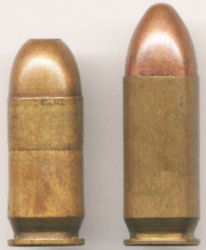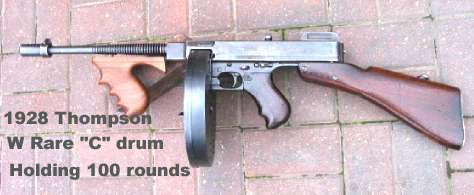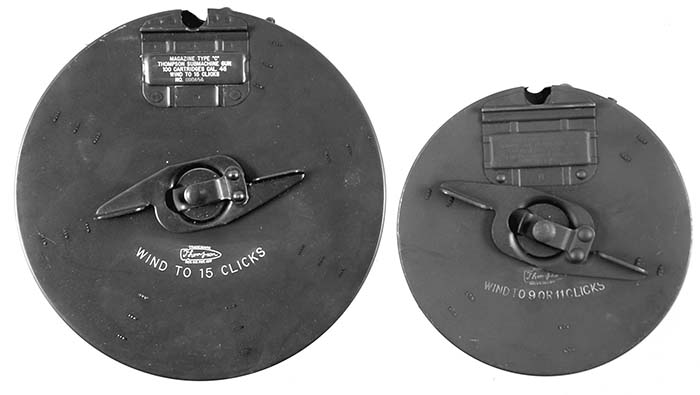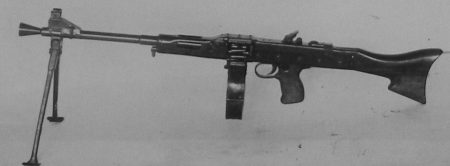BR2
-----Owen 32ACP
-----M2 Hyde (20)
BR3
-----Owens MK2
-----M3 9MM (650BPM)
BR4
M3/T29 (40)
Experimental STEN prototypes 1. The ROFSTEN (900)
Smith & Wesson machine carbine (40)
BR5
Belt-fed Sten gun? This is the Small Arms Ltd. Model 2 (50)
Jurek MK1 (50 1,000)
BR2
-----Owen 32ACP

Historical Firearms - Experimental Second Model .32 ACP Owen Submachine...
The Australian Owen SMG
U.S. Submachine gun, Caliber .45, M2[1]

BR3
Owens MK2


Experimental Owen Mk II Sub-machine Gun.
December 1942 as the U.S. Submachine Gun, Caliber .45, M3.[13] Guide Lamp produced 606,694 of the M3 variant submachine gun between 1943 and 1945.[13] Although reports of malfunctions caused by the single-feed magazine design appeared during the initial firing trials, no changes were made to the M3 magazine.[13]
Around one thousand M3 submachine guns in caliber 9 mm Parabellum were built by Guide Lamp.[16] These original 9 mm guns, identified by the markings U.S. 9 mm S.M.G. on the left side of the magazine well (without any model designation, such as M3), were delivered to the OSS in 1944.[17] The 9mm M3 was also supplied to the French, Belgian, Dutch, Italian and Norwegian resistance groups so that captured German ammo could be used thus reducing the need for .45 ACP ammo resupply drops from the OSS and the SOE. Additionally, Rock Island Arsenal and Buffalo Arms Corporation manufactured parts for a limited number of 9 mm conversion kits for the M3.[18] Though 25,000 kits were originally requested for procurement, this was changed to a recommendation by the Ordnance Committee in December 1943 that only 500 9 mm conversion kits be obtained.[18] Procurement was authorized in February 1944, but it is believed that only a limited number of kits were actually produced.[18] These conversion kits included a new 9 mm barrel, replacement bolt and recoil springs, a magazine well adapter for use with British Sten gun 32-round magazines, and a replacement 9 mm Sten magazine of British manufacture.[18] As the M3’s sights were not altered for the new cartridge, the 9 mm M3 shot high at 100 yards, but the sighting error was deemed inconsequential. The OSS also requested approximately 1,000 .45-caliber M3 submachine guns with an integral sound suppressor designed by Bell Laboratories. Specially- drilled barrels and barrel nuts were manufactured by Guide Lamp, while the High Standard Firearms Company produced the internal components and assembled the weapon.[19] The Bell Laboratories suppressor was estimated to be only 80% as efficient as the British suppressed STEN Mk IIS.[20]- +
RR4
M3/T29

Prototype chambered in .30 Carbine.[48][49] The idea for the T29 was driven by logistical reasons and for a weapon to rival the StG 44 which used an intermediate round.
The first two examples used 14 inch barrels whereas the third used an 8 inch barrel. Notable differences of the T29 to the M3 SMG was the increased length of the magazine well and magazine release catch to use M1 Carbine magazines. Internal components such as the bolt was cut back 9.5mm to give the front of the bolt 15.8mm diameter round extension and a 12.7mm steel block at the rear of the bolt for weight. The guide rod locating plate ahead of the bolt was made thicker and given a central hole to match the round extension of the bolt. This operation closed the bolt head during the last part of the travel forward striking the cartridge. The mainsprings were also different, a system of two springs were used in the T29 to drive the bolt and also used a shorter stronger spring as a buffer. The ejector was also different as it was spring loaded.
Receivers of the T29 were modified from M3 SMG receivers using the same M3A1 layout without the previous damage prone cocking handle. Retractable M3 SMG stocks were used without the integral loading tool. Double column, double feed magazines were easy to load without the use of a speedloader. Ejection port was lengthened for the .30 carbine round with the dust cover acting as a safety.
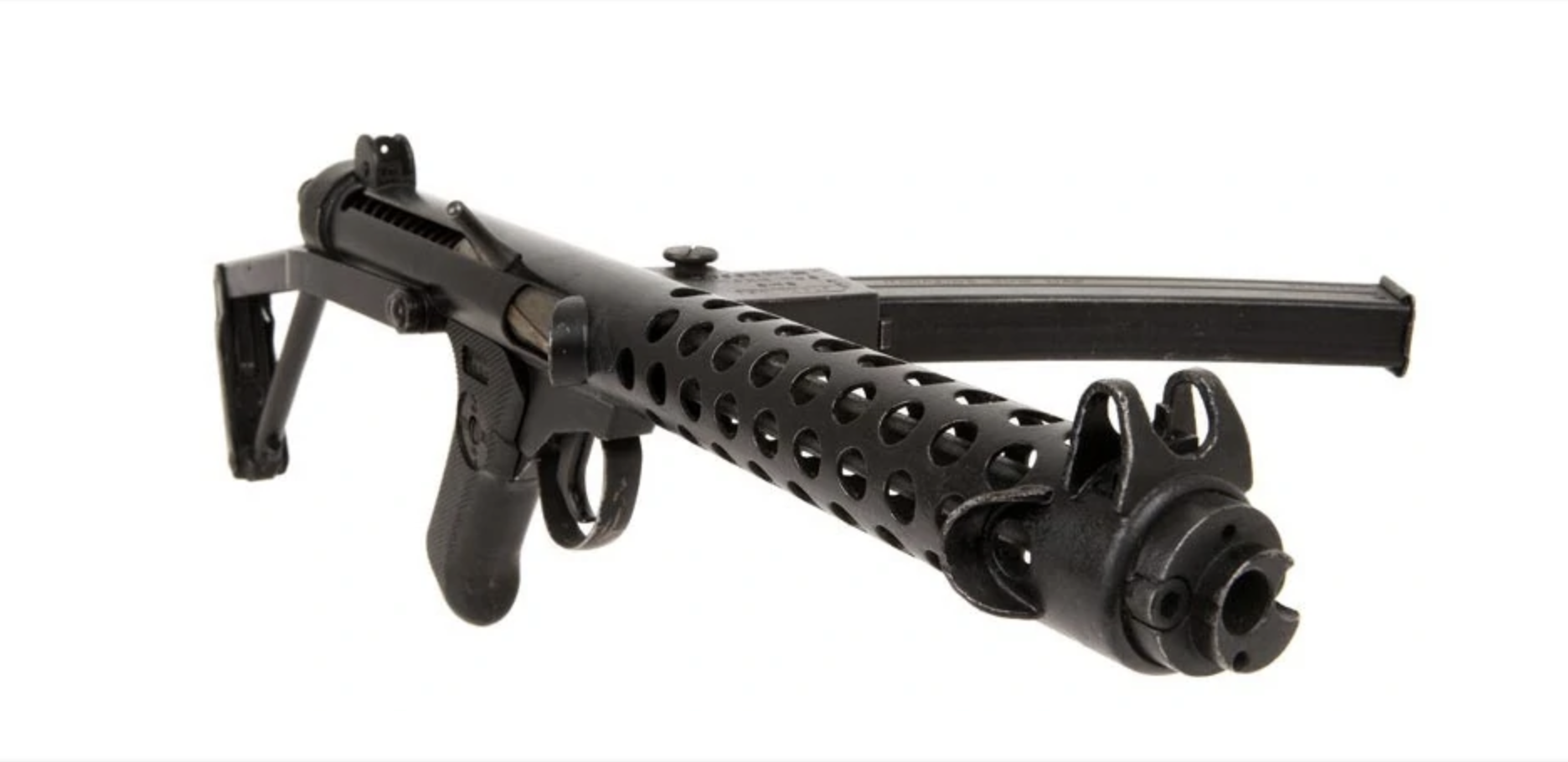
Sterling/Patchett Machine Carbine Mark 1 (50)
Sterling submachine gun - Wikipedia

Rofsten
Developed at the Royal Ordnance Factory in Fazakerley (ROF Fazakerley), the Rofsten is an odd Sten prototype with a redesigned magazine feed, ergonomic pistol grip, selector switch and cocking system. The weapon is cocked by pulling the small ring above the stock. A large flash eliminator is fixed onto the barrel, and a No.5 bayonet can be fixed. It is made to a very high quality standard and has an increased rate of fire (around 900 rounds per minute). The Rofsten was made in 1944 as a single prototype and ROF wanted to submit it to trials the next year. Despite better quality there were numerous reliability problems due to the much higher rate of fire. The budget cuts prevented the modifications and this version never got beyond the prototype stage.

Smith & Wesson machine carbine (40 9mm)
In 1945 Smith & Wesson produced a new prototype 9mm carbine that was built in two versions: a selective-fire model with a folding stock and a semi-automatic model with a wooden stock. These guns were not blowback but were in fact gas-operated. That they were sent to Britain for testing, as well as the fact that they fed from Sten magazines, would imply that they were possibly intended for British military use. It is possible that this weapon was an attempt by Smith & Wesson to win back the favor of the Royal Navy, who had bought 2,000 S&W-made 9mm carbines in 1940 but were very disappointed with them and prematurely retracted them from service. In any case, the war came to a close before development of this new carbine was completed and only a few prototypes were made.
BR5

Small Arms Ltd. Model 2 (50)
Designed by Antoni Rosciszewski of Small Arms Ltd, this weapon uses a magazine with an internal endless belt feed holding 50 rounds of ammunition. The weapon also has a two-stage trigger for automatic and semi-automatic fire.

50 round
This was the first SMG (of two) made by Marian Jurek whilst he was serving with the 16th Independent Armoured Brigade. It was hand-made in his spare time using some parts from the SMLE rifle, and fed from 32-round Sten or 50-round Lanchester mags . The action was straight blowback and the fire rate was about 1,000 rpm.
